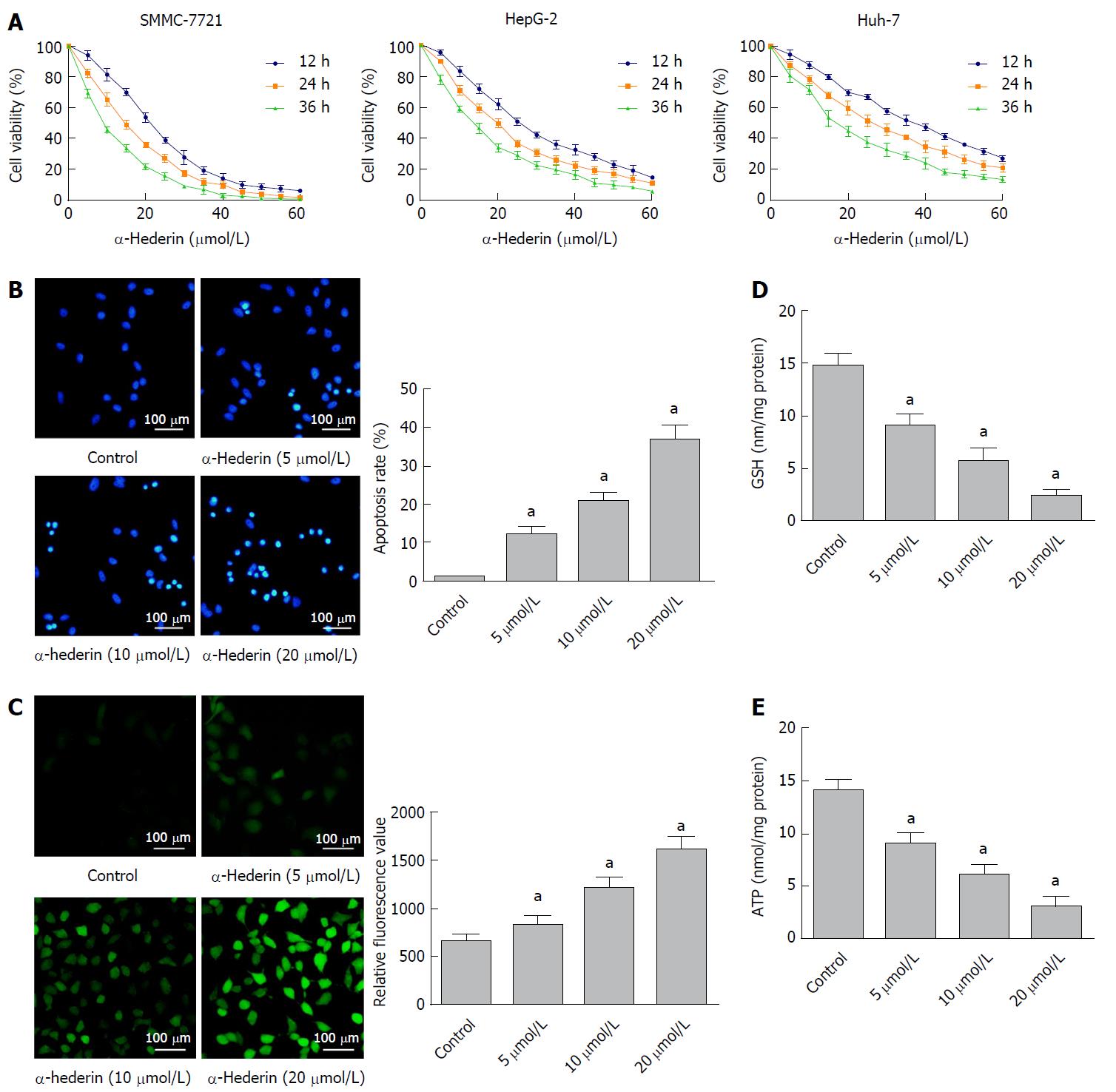Copyright
©The Author(s) 2018.
World J Gastroenterol. May 7, 2018; 24(17): 1901-1910
Published online May 7, 2018. doi: 10.3748/wjg.v24.i17.1901
Published online May 7, 2018. doi: 10.3748/wjg.v24.i17.1901
Figure 1 α-hederin reduces hepatocellular carcinoma cell viability and induces the apoptosis of hepatocellular carcinoma cells through GSH depletion and reactive oxygen species accumulation.
A: Cell Counting Kit-8 assays showed that α-hederin inhibits the viability of hepatocellular carcinoma cells (SMMC-7721, HepG-2, and Huh-7) in a dose- and time-dependent manner; B: SMMC-7721 cells were incubated with α-hederin (0, 5 μmol/L, 10 μmol/L, or 20 μmol/L) and stained with Hoechst 33258. Apoptotic cells were identified by fragmented and condensed nuclei under a fluorescence microscope. The percentage of apoptotic cells was calculated, P for trend < 0.01; C: SMMC-7721 cells were incubated with α-hederin (0, 5 μmol/L, 10 μmol/L, or 20 μmol/L), followed by incubation with DCFH-DA and observation under a fluorescence microscope or measurement using a microplate reader, P for trend < 0.01; D and E: SMMC-7721 cells were treated with α-hederin (0, 5 μmol/L, 10 μmol/L, or 20 μmol/L). GSH and ATP levels were measured using GSH and ATP Assay Kits and a microplate reader, P for trend < 0.01. aP < 0.05 vs control. ATP: adenosine triphosphate; GSH: Glutathione; ROS: Reactive oxygen species.
- Citation: Li J, Wu DD, Zhang JX, Wang J, Ma JJ, Hu X, Dong WG. Mitochondrial pathway mediated by reactive oxygen species involvement in α-hederin-induced apoptosis in hepatocellular carcinoma cells. World J Gastroenterol 2018; 24(17): 1901-1910
- URL: https://www.wjgnet.com/1007-9327/full/v24/i17/1901.htm
- DOI: https://dx.doi.org/10.3748/wjg.v24.i17.1901









